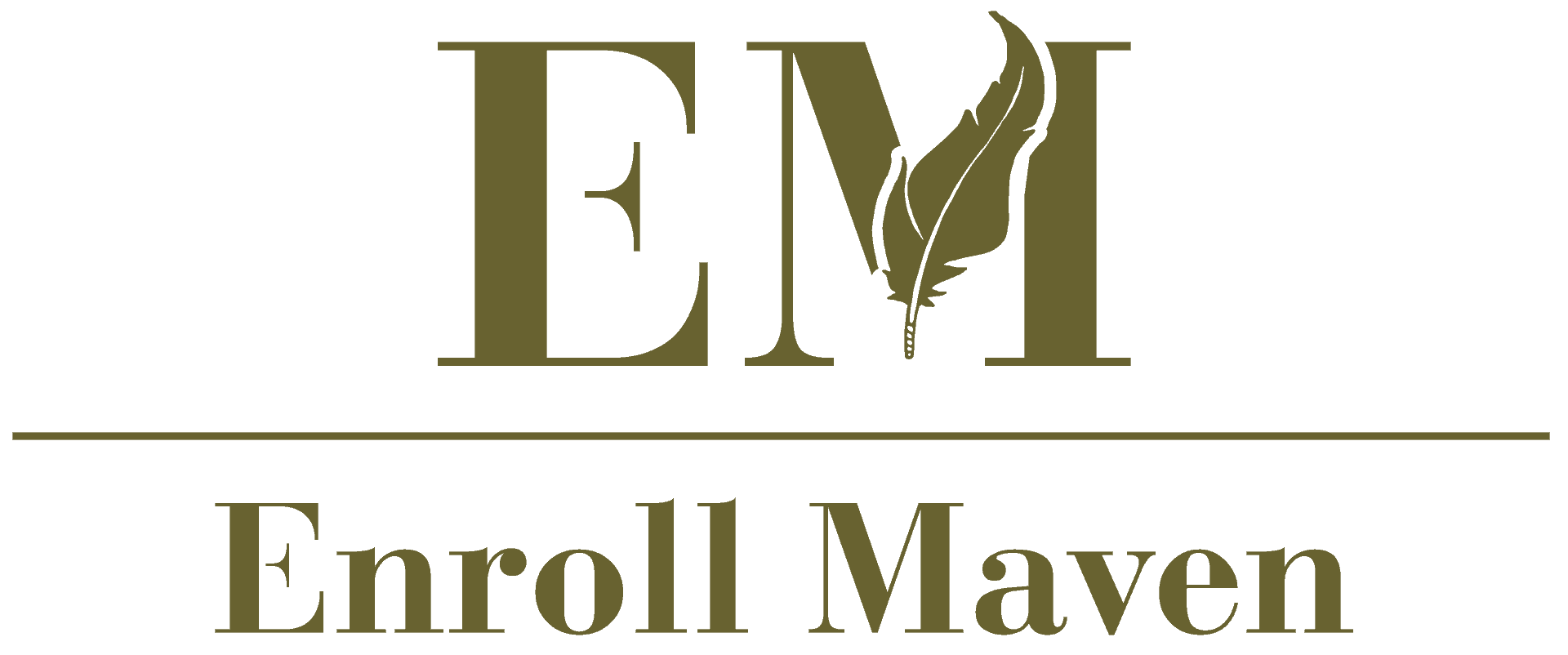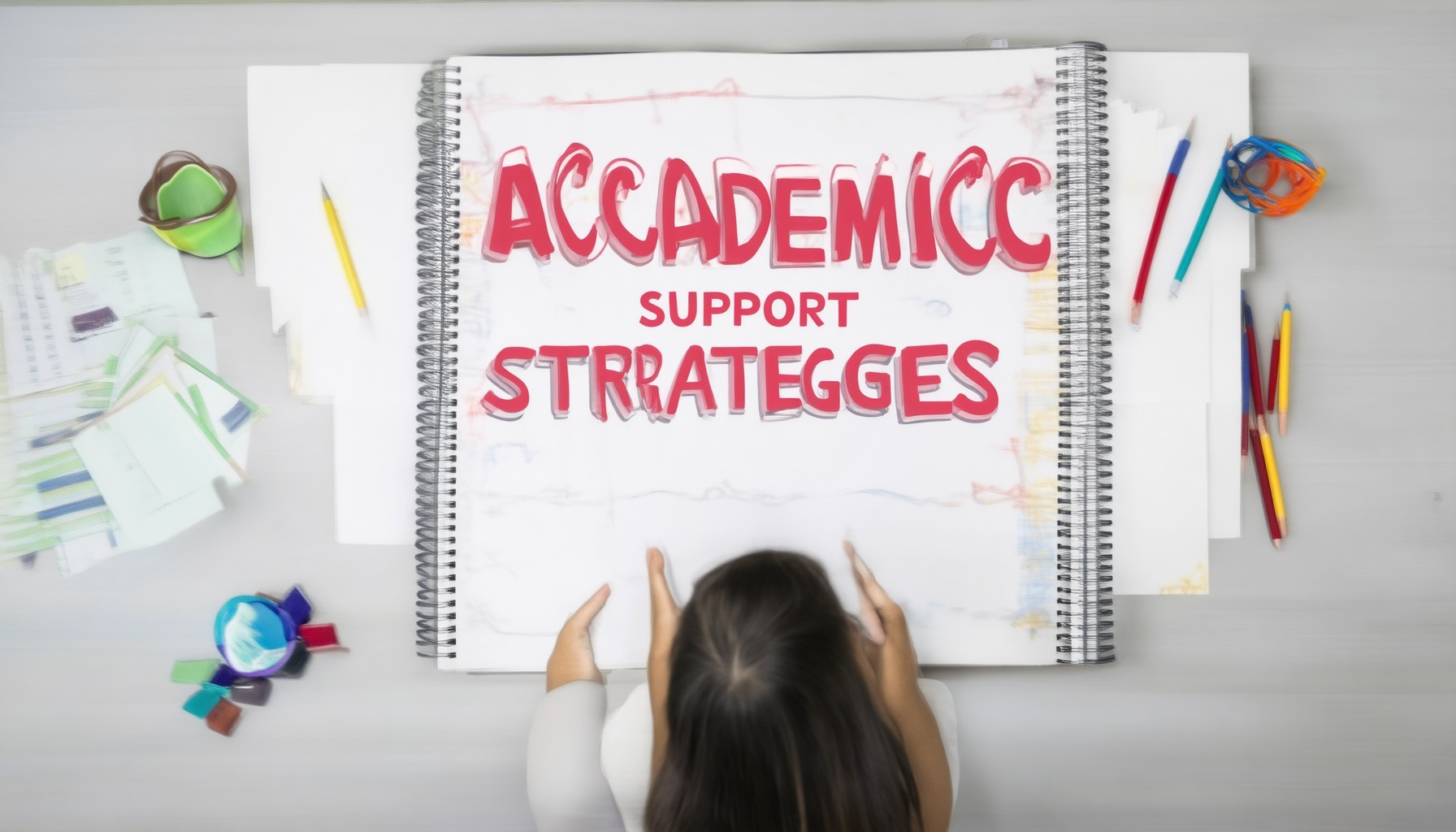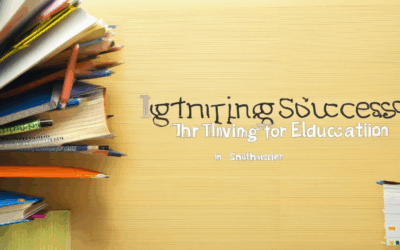Academic support strategies play a pivotal role in addressing the multifaceted needs of today’s diverse learners, offering pathways to enhanced academic success and fostering inclusive learning environments. In an era where education systems increasingly recognize the varied learning needs of students, the implementation of effective academic support strategies has become essential for both educators and institutions. These strategies not only provide targeted assistance but also empower students to overcome challenges, whether they relate to cognitive, physical, or emotional barriers. By leveraging tools like differentiated instruction, assistive technologies, and collaborative learning approaches, academic support strategies can significantly boost student outcomes, ensuring that no learner is left behind. This comprehensive guide delves into actionable tactics, real-world applications, and evidence-based practices designed to meet the educational needs of all students, paving the way for a more equitable and successful academic journey.
Academic Support Strategies
Effective academic support strategies are essential for helping students achieve their goals and succeed in their educational journey. Below are some proven approaches that can significantly enhance academic performance:
1. Peer Learning Groups
Forming study groups with peers can foster collaboration and mutual support. Regular meetings to discuss topics, share resources, and quiz each other can improve understanding and retention.
2. Tutoring Programs
Access to qualified tutors or mentorship programs can address specific academic challenges. Tutors provide personalized help, enabling students to grasp complex concepts and improve grades.
3. Academic Coaching
Coaching focuses on developing study skills, time management, and goal setting. It helps students identify strengths and weaknesses, creating a roadmap for success.
4. Online Resources and Tools
Utilizing online tools and platforms can streamline studying. These resources offer interactive exercises, video tutorials, and progress tracking, making learning more efficient.
5. Early Intervention Systems
Implementing early alert systems allows educators to identify struggling students early. This enables timely interventions, such as additional support or tailored resources, to prevent academic difficulties.
6. Faculty Mentorship
Mentorship programs connecting students with faculty can provide valuable guidance. Mentors offer insights into academic expectations, career paths, and strategies for excelling in higher education.
7. Study Habits Reinforcement
Encouraging consistent study habits through workshops or apps can improve long-term academic outcomes. Tools like calendars and task managers help students stay organized and motivated.
8. Competency-Based Learning
Adopting competency-based learning ensures students master specific skills before moving forward. This approach tailors instruction to individual needs, fostering deeper understanding.
9. Parental Involvement
Involving parents in a student’s academic journey can create a supportive network. Open communication and shared responsibility contribute to a positive learning environment.
10. Technology Integration
Leaving no stone unturned, integrating technology into teaching methods can transform learning. Interactive software, virtual classrooms, and online assessments enhance engagement and efficiency.
By combining these strategies, educational institutions can create a robust framework that supports student success at every level. Remember, the key is to tailor these approaches to meet the unique needs of your institution and its learners.
Examples of Academic Support
Academic support encompasses a variety of strategies and programs designed to enhance student learning, engagement, and success. Below are some examples of academic support initiatives:
- Tutoring and Mentorship Programs : These programs provide individualized attention and guidance to students who need assistance with specific subjects or academic skills. Tutors or mentors can help students understand complex concepts, prepare for exams, and develop study habits.
- College and Career Counseling Services : These services assist students in planning their academic futures, including selecting courses, applying to colleges, and preparing for standardized tests like SAT or ACT. counselors also help students explore career options and navigate the college application process.
- Supplemental Courses and Instructional Opportunities : Offering summer school, weekend classes, or online courses can provide students with additional support to master difficult subjects or recover credits. These programs often focus on specific skill-building or exam preparation.
- Faculty and Volunteer Advisories : Academic support can also come from experienced educators or volunteers who offer guidance on academic matters. These advisors may work with students individually or in groups to address challenges and provide encouragement.
- Alternative Grouping Strategies : Some schools implement flexible grouping models, such as ability-based or interest-driven groupings, to cater to diverse learning needs. This approach ensures that students receive tailored academic support based on their strengths and weaknesses.
- Enroll Maven Resources : Enroll Maven offers a wealth of resources and guides to help students navigate the complexities of academic life. From study tips to college application advice, our platform is designed to empower students with the tools they need to succeed.
By implementing these strategies, schools and organizations can create a supportive environment that fosters academic growth and prepares students for long-term success.
Five Strategies for Academic Success
- Stay Organized: Use tools like planners or digital calendars to track assignments, exams, and deadlines. Breaking tasks into smaller steps can make studying and completing work more manageable.
- Practice Active Learning: Engage with material through discussions, teaching others, or applying concepts to real-world scenarios to enhance retention and understanding.
- Manage Time Effectively: Prioritize tasks based on deadlines and difficulty, allowing time for review and practice. Avoid procrastination by setting clear goals and timelines.
- Become a Lifelong Learner: Explore hobbies and interests that stimulate your mind, as diverse skills contribute to academic success. Stay curious and open to new ideas.
- Build Strong Relationships: Connect with peers, mentors, and teachers who can offer support, feedback, and guidance. Collaborative learning can also boost understanding and confidence.
For more insights and actionable tips, visit Enroll Maven’s Academic Success Guide to discover proven techniques and resources tailored for students.
What is a Student Support Strategy?
A Student Support Strategy is a structured plan designed to help students overcome challenges and achieve academic success. It involves identifying areas where students may struggle, providing tailored interventions, and implementing evidence-based practices to foster growth and resilience.
Here’s a breakdown of key components of an effective Student Support Strategy:
- Identification of Needs :
- Assess students’ strengths and areas needing improvement through testing, observations, and feedback.
- Consider factors such as learning disabilities, emotional barriers, and socioeconomic challenges.
- Individualized Interventions :
- Develop personalized plans for each student, focusing on specific goals and resources.
- Offer flexible learning options, mentorship programs, and access to additional support services.
- Research-Based Practices :
- Implement proven teaching methods, such as differentiated instruction and small-group tutoring.
- Use technology and tools to enhance learning experiences and engagement.
- Ongoing Monitoring and Adjustment :
- Regularly evaluate the effectiveness of interventions and adjust strategies as needed.
- Provide continuous support and celebrate progress to maintain motivation and confidence.
- Collaboration and Resources :
- Foster partnerships between teachers, parents, counselors, and community organizations.
- Ensure access to academic resources, extracurricular activities, and mental health support.
By combining these elements, a Student Support Strategy creates a nurturing environment that promotes long-term academic success and personal development.
For further reading, explore Enroll Maven’s comprehensive guide on student support strategies and discover practical tools to enhance learning outcomes. Additionally, check out their courses on academic support for actionable insights and strategies.
Student Academic Support
Student academic support refers to a broad range of resources, services, and strategies designed to help students achieve academic success. These supports aim to address challenges students may face, whether it’s difficulty with coursework, staying organized, managing time, or overcoming learning barriers.
Key Components of Academic Support
- Academic Resources: Access to textbooks, study materials, and online databases to aid learning.
- Tutoring Services: One-on-one or group sessions with knowledgeable instructors to explain concepts and provide practice problems.
- Study Strategies: Workshops and tools to help students develop effective study habits and time management skills.
- Writing Centers: Assistance with essays, reports, and research papers to improve writing proficiency.
- Math Clinics: Support for students struggling with mathematics, offering additional practice and problem-solving techniques.
Types of Academic Support
Academic support can be delivered in various forms, including:
- In-Person Tutorials: On-campus or off-campus sessions led by teachers or trained facilitators.
- Online Platforms: Digital tools and platforms providing 24/7 access to resources and virtual tutors.
- Peer Support Groups: Opportunities for students to connect with peers facing similar challenges.
- Faculty Mentorship: Guidance from experienced educators to help students navigate academic life.
Examples of Academic Support Services
Many institutions and organizations offer comprehensive academic support systems. For instance:
- Enroll Maven: A platform offering tips, advice, and insights to help students succeed academically. It covers topics like effective learning strategies, college preparation, and enrollment guidance.
- Chegg: Provides tutoring services, study guides, and homework help to students.
- Course Hero: Offers essay writing assistance and study resources to students.
- University Writing Centers: Many universities have centers dedicated to helping students improve their writing skills.
Benefits of Academic Support
- Improved grades and academic performance.
- Increased confidence and readiness for exams.
- Stronger critical thinking and problem-solving abilities.
- Effective time management and study habits.
How to Access Academic Support
Students can access academic support through several channels:
- School Websites: Most schools list available academic support services on their official websites.
- Counselor Offices: High school counselors often provide academic advising and support.
- Online Platforms: Many academic support services are now available online, making it easier for students to access help from anywhere.
- Third-Party Resources: Websites like Enroll Maven and others offer additional support tools and guides.
By utilizing these resources, students can significantly enhance their academic performance and overall success in school.
What is a Positive Support Strategy?
A Positive Support Strategy is a structured approach designed to encourage and reinforce positive behaviors, effectively replacing negative or challenging behaviors with more constructive ones. This method is widely used in educational settings, particularly for students with special needs, to foster a supportive and productive environment.
Key Components of a Positive Support Strategy:
- Assessment : Begin by thoroughly assessing the individual’s current behaviors, strengths, and challenges. This helps in tailoring the strategy to their unique situation.
- Clear Goals : Define specific, measurable objectives aligned with the individual’s needs and the broader educational goals.
- Support Plan Development : Create a detailed plan that includes:
- Antecedents : Identify triggers or cues that may lead to positive or negative behaviors.
- Behaviors : Define the desired positive behaviors to be reinforced.
- Consequences : Establish positive reinforcement strategies to encourage the desired behaviors.
- Implementation Tools : Utilize tools such as reinforcement charts, visual schedules, and praise systems to track progress and maintain engagement.
- Ongoing Monitoring : Regularly monitor the effectiveness of the strategy and adjust as needed to ensure continued success.
- Student Involvement : Involve the student in the process to enhance their ownership and motivation.
Benefits:
- Positive Environment : Promotes a climate of encouragement and cooperation.
- Reduced Conflict : Minimizes disruptive behaviors by addressing root causes.
- Skill Development : Fosters essential life skills and social competencies.
Examples:
- Reinforcement Techniques : Using praise or rewards to reinforce positive actions.
- Visual Schedules : Providing clear visual cues to help individuals understand expectations.
For further resources and strategies tailored to educational success, visit Enroll Maven to explore tips, advice, and insights designed to support academic achievement.
Conclusion:
Implementing a Positive Support Strategy can significantly enhance learning outcomes and overall well-being. By focusing on reinforcement and a supportive environment, educators can empower students to thrive academically and socially. Consider exploring more strategies and tools on Enroll Maven to support your educational journey.









0 Comments